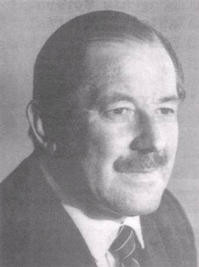


Memories of the Bureau, 1946 to 1962
Foreword
Terminology
Prologue
Preface
Chapter 1: The Warren Years, 1946 to 1950
Warren the Man
Warren Joins the Bureau
Wartime Perceptions and Attitudes
Return to Civvy Street
Frosterley
People in the Bureau
Re-establishing and Reorganising the Bureau
Reorganisation of Central Office
The Position of Chief Scientific Officer
Post-War Reorganisation
The Haldane Story
Public Weather Services
The New South Wales Divisional Office
The Victorian Divisional Office
The Queensland Divisional Office
The South Australian Divisional Office
The Western Australian Divisional Office
The Tasmanian Divisional Office
Pre-war Services for Civil Aviation
Post-War Meteorological Service for Aviation
Indian Ocean Survey Flight
The Aviation Field Staff
Synoptic Analysis, Prognosis and Forecasting
Antarctic and Southern Ocean Meteorology
A Wider Scientific Horizon
Research, Development and Special Investigations
Analysts' Conference, April 1950
Instruments and Observations
Radiosondes
Radar Winds and Radar Weather Watch
Telecommunications
Climate and Statistics
Training
Publications
CSIRO
The Universities
Achievements of the Warren Years
Chapter 2: International Meteorology
Chapter 3: The Timcke Years, 1950 to 1955
Chapter 4: A Year at the Massachusetts Institute of Technology
Chapter 5: The Dwyer Years, 1955 to 1962
Chapter 6: A Springboard for the Future
Appendix 1: References
Appendix 2: Reports, Papers, Manuscripts
Appendix 3: Milestones
Appendix 4: Acknowledgements
Appendix 5: Summary by H. N. Warren of the Operation of the Meteorological Section of Allied Air Headquarters, Brisbane, 1942–45
Endnotes
Index
Search
Help
Contact us

People in the Bureau (continued)
The members of the second forecasters' training course in 1937 are described by John Lillywhite in Metarch Papers No 4 (1992). All who remained with the Bureau had university degrees in science with majors in mathematics and physics.Another group were those who undertook the first training school for observers in 1938. These people, who had secondary school education, were trained to make surface and pilot balloon observations and plot charts.
These three groups were the vanguard of those recruited for service at the field offices newly established in 1937 and with the graduates of subsequent training courses formed the bulk of the RAAF Meteorological Service.

During the war the availability of suitably qualified people for training as forecasters became depleted and some without university degrees were accepted because of the urgent need to meet the increasing demand for services. They, and other forecasters without university qualifications (such as those from the first of the two 1937 forecasters' courses) were able to produce useful forecasts using the training they had received.
In 1946 Warren had to devise an interim solution to the problem of meeting the urgently needed services for aviation and other requirements.
One source of intake was young airmen who were undergoing training as aircrew in the Empire Air Training Scheme when the scheme was abandoned in 1944 with the end of the war in sight. One such intake was Don Handcock who remustered as a meteorological assistant in the RAAF Meteorological Service and after demobilisation and a period as a cadet meteorologist became a professional meteorologist and had a distinguished career in the Bureau. An article in Weather News No 315 tells some of Don's story (Handcock, 1997).
People in Bright Sparcs - Handcock, Don; Lillywhite, John Wilson; Warren, Herbert Norman
 |
Bureau of Meteorology |  |
© Online Edition Australian Science and Technology Heritage Centre and Bureau of Meteorology 2001
Published by Australian Science and Technology Heritage Centre, using the Web Academic Resource Publisher
http://www.austehc.unimelb.edu.au/fam/0864.html